It is harder to conjure words about home. Home is the place known most intimately. If I write about a new place and my writing washes away some of the nuance, I wouldn’t know the difference anyway. It’s in the nature of writing to distort, and I’m fine with that, except that home doesn’t deserve that distortion. Or rather, I don’t know how I feel knowing so starkly the difference between the reality of home and the stuff I see written on a page trying to reveal my home to me. And what about the people who would read about my home but have never been? They will have nothing but the washed out gorges of my words. What a pity.
In Arizona, many bridges are labeled with signs which identify ‘washes’ that the bridges bridge. A wash, arroyo, or wadi, is a dry, desert ‘creek bed.’ The curious thing is, it doesn’t rain in Arizona. What is wash, when there’s no water? To the visitor, these washes may merely be expensive pranks, names to ignore along with other useless signs dotting the road. My ignorance of the geological and meteorological happenings in Arizona grants me the luxury of ignoring.
Apparently, there are seasonal downpours in Arizona and those downpours flood the desert terrain. Rainwater streams down hard-packed desert hills gaining speed as it reaches lowlands where all the rains from neighboring and similarly sloping hills meet and cause ‘washes.’ The washes flood the lowlands that the bridges bridge, washing sands, rocks, shrubs, and any debris it opts to pick up, downstream. So the washes are ignored as a desert prank by me just as whatever has grown or accumulated in these washes is ignored by the water that washes everything away with flood force. Travel writing is a flood washing away nuance in the eyes of citizens, but establish normal anew for visitors.
The bridges maintain a distance between cars and riverbeds. To protect from the worst-case scenario that is car meets riverbed when river is flowing in riverbed. Cars and rivers don’t always get along well. But that is a worst-case scenario. Most times the bed is dry and someone could drive through wider washes and walk through narrower ones. Could explore them. Such explorations might even be profitable, because rivers aren’t super sentient and aren’t really motivated by profit margins and to them gold is just debris and they wash debris downstream. So if you know where and how to look, you could find gold in those washes. But if you don’t know to maintain an attention to detail, if you take only a cursory glance, if you just generalize and say that washes are practical jokes or dustbeds you won’t find that stuff that humans call “valuable” and rivers refer to as either “debris” or “gurglebsoshsshswooshgurgle.”
Travel writing is ‘they,’ is personal experience announcing the reality of a place that the writer may only vaguely know. At its best it can be informative, inquisitive, revelatory. At its worst, it can be dismissive, reductive, ignorant. Writing about Maui, when I was born on O’ahu and raised on Maui from my first birthday onward, is a new and troubling endeavor. I worry that anything I say will be biased because it will be. I worry that it will tell too much, or not enough, that even in telling too much my writing will never be enough. There is a lot of Maui out there. There are heaps of humans, experiences, vantage points, realities. But all I can do is come from my experiences, using my words and my voice, and try to articulate some of this place that is so familiar and so foreign. It is quite possible that what I say will be from the perspective of a foreigner, because somehow, even after all these years, I still am one. My skin being proof of what Amiri Baraka once said: “I can never be of this place because my skin brands me, at first glance, as someone who had been brought here.”
While I wouldn’t dare be the wash that obfuscates the difference between being an ex-slave in America and a white person in Hawaii, I would dare to say that my skin starts a very specific conversation about me and within my self. Conversations, considerations, meditations of self wouldn’t be so complicated if I had been born to brown-er parents, be they hypothetically Hawaiian, Filipino, Brazilian, etc. Then I might look local to people who wondered, regardless of dress, speech, or any other markers I might deploy. But I look white and to people who wonder, that probably situates me among the ‘flew here’ referenced by the Hawaiian bumper sticker that reads: “I grew here you flew here.” The racism I experience, imagine myself to experience, have experienced and thus imagine to be continually experienced, is a difficult, remarkable, outrageous type of racism. I am never home. So that’s a little bit about my reality and what I might bring to an essay about Maui. And rather than go somewhere on Maui where white is pretty normal, I am going to Mayjah Rayjah. A reggae/jahwaiian music festival that is likely to be upwards of 90% non-white. Now, to be totally fair, I come to this festival not only as a white person, but as one that doesn’t necessarily like reggae. That distaste may stem from the idea that reggae is a ‘chill’ music which emphatically rejected me, even beat me up as a youth. Obviously it will be tough to go to this festival as anything other than an outsider, but I’m pretty fluent in pidgin, and we all know Shaggy, the concert’s headliner, so why not? I’m sure to find something I like.
So with that as preface, at 6pm (an hour after the concert ‘started’), my copilot and I pull into the parking lot of Maui Community College, across from the Maui Arts and Cultural Center (MACC) where the concert was being held. Upon pulling in, we immediately see attendees breaking the rules which were acknowledged with the purchase of the tickets.
There are multiple tailgate parties occurring alongside Toyota truckbeds. The tailgaters are mostly “mokes.”
In Hawaii, ethnic groups are differentiated through a set of terms, jokes, and stereotypes. Awareness of those stereotypes allows individuals to establish themselves as “kama’aina” or local. These linguistic codes enable identification. The economy in Hawaii runs on tourism and locals span the entire ethno-racial spectrum. The codes establish cultural belonging and enable the identification of tourists.
Moke is an antonym for “haole.” Haole means “without breath,” and the legend goes that the term stems from the first meetings of Europeans and Hawaiians. The traditional Polynesian greeting is to touch faces, nose to nose, and exchange the “ha,” or sacred breath, and of course the Europeans arrived in Hawaii and tried to “shake hands,” not exchange “ha.” Thus, no breath, or, haole. So, haole is a bit like saying foreigner. The term is largely negative for referring to a foreigner ignorant of local customs. The term might more accurately refer to tourists, but is frequently used to denigrate white locals.
On the other hand, for a white local to refer to a dark-skinned local as merely “local” would self-impose the alien-ness already foregrounded by the offending white skin. “Skin” and “moke” are terms used to refer to large, dark-complected locals and both terms offer differentiation while also enabling the speaker to establish a local identity.
Toyota trucks are another status symbol on the island of Maui, so the presence of the Toyota’s at the tailgating further establishes the tailgaters’ status. I’m in a Honda CR-V. It’s white. The car says haole, but the dark tints say local.
There are no cars next to us where we park, but a white, 4-door, 90’s-era Tacoma pulls in across from us immediately. The backseat passenger gets out to eat his Jack-in-the-Box. Several stalls down from the white Tacoma there is another Tacoma, this one black, aughts-era, and two shirtless males stacked with muscles and tribal tattoos are leaning against it and talking between shots of Jack Daniels. One has a skateboard and is wearing a Schoolboy Q bucket hat. The shirtless pair know a dark-blue-aughts-Toyota full of mokes that arrived 5 stalls down from our CR-V.
The skateboarder now cruises between the two vehicles serving Jack and Coke by the mouthful to any interested associate. One of the occupants from our row brings out an unlit torch for fire-dancing and directly in front of our vehicle he hands it to the non-skateboarding shirtless bradda with the long curly hair pulled back under a black hat who also has jean shorts on. The bradda with hair pulled back begins to do a brief, impromptu, fire dance (sans fire). After a minute of twirling and whirling, he succumbs to his intoxication and drops the fire-free-torch. He and his friend shake hands and retreat to their respective Tacomas. I had forgotten that black shirt and jeans are the official ensemble of the Maui concert scene. I’m out of dress code.
That transpires on our windshield-as-tv-screen, while inside the CR-V, a Jim Beam pint is running out. We open beers. As we drink, a security golf-cart rolls past. They don’t bother anyone, in spite of all the rules being broken.
Copilot: “Do you think we’ll see a fight tonight?”
Me: “Yeah”
A car pulls up and parks two stalls to our left. It is a 60-something-year-old white couple. They pack a bowl and begin smoking weed in front of the security guards, who laugh. We laugh too, in our tinted whip. A pair of platform black Scott slippers is spotted. A throwback to high school from my perspective, but maybe they never went out of style. I’ve been living off-island for a while.
Copilot: “Do you think it’ll be women or men?”
Me: “Men”
Copilot: “Do you think we’ll see any women fight?”
Me: …
To our right, a white Pontiac Grand Am pulls up. A 45year old white woman with blonde hair is driving. In the passenger seat is a white woman who looks like she could be the driver’s daughter. Meaning, she is also blonde, is wearing glasses, and appears to be in her twenties. In the back seat is a long-haired blond creature. Looks like an 8-10 year old girl. There is a golden retriever in the back seat as well.
One fact from that last paragraph is false.
Me: “Yeah”
Physical fights loom as a constant threat in Hawaii, sometimes provoked by the simple fact of being a haole. Attending the Mayjah Rayjah constitutes a right risk.
Across the aisle, people drinking Heinekens surround the white Tacoma. Heineken has long been a status beer in Maui County. Things haven’t changed much since high-school, it appears.
In the Pontiac, the child leans into the front seat as the two older women drink colorful liquors out of single-serve shot bottles. Then the women in the front break out a weed pipe and smoke while the child takes this opportunity to belly-button fondle. The girl eventually climbs out of the sunroof and becomes a boy in a brand new Teenage Mutant Ninja Turtles shirt. Not sure how I feel about Hpnotiq and weed being injested in the car with this little boy, but at least he has that new TMNT shirt. His hair is longer than whichever of these women is his mom. The boy seems to be living someone’s hippie dream.
Copilot: “Do parents in Denver smoke weed in front of their kids?”
A white Ford E-150 pulls up next to us. The windows are tinted, making the van opaque. I can no longer see the Tacoma 5 stalls down nor the old pair smoking weed. The van has caulking sealing the rear window, probably against leakage. The driver gets out and begins to change clothes for the concert. He could live in his van, if he doesn’t. He could live there with the woman in the passenger seat, who now changes her clothes too. Once he gets his clean shirt on, he puts deodorant under his arms on the outside of his shirt.
Having finished our beers, we are ready to go. We get out of the car and join the caravan of humans thronging towards the entrance. The combination of my intoxication with the still-day-lit reality of the scene highlights, in my own mind at least, that I am dressed like someone from the mainland.
As far as men’s outfits are concerned, the preference is for black shirts, jeans or jean shorts, black slippers or black or white shoes, and black or white hat or no hat. Accompanying chains and/or a watch are also allowed. I wore black pants, vaguely a no-no. I wore a button-down shirt with a collar. A no-no. It’s a green shirt. No-no. I wore a hat with a loud floral print. No-NO. I wore “grizzled chestnut” brown, leather high-top sneakers. NO-NO. I felt uncomfortable with my whiteness before I arrived. Now I’m white and wearing an outfit that says NOT FROM AROUND HERE. So that’s nice.
Gotta ignore that. Conviction. I’m chillin. Walking in as the sun dips behind the West Maui mountains, it’s a pretty setting for a concert. As we enter, I am slightly disoriented by the diverse sets of stimuli. Ushers take our tickets, which are tagged with another rule ‘no re-entry.’ Too bad, because there is nobody inside yet. I mean, less than half of what there will be because for now it is too light out to get raucous. Even the pleading of the first band, Kapena: “Can I get a cheeeeeheeeeee?” is met with only mild enthusiasm.
As Kapena winds down and Anuhea prepares to come onstage, the MC, an MC Hammer-style-capri-wearing woman with a short boy-cut is grooving. She has great energy and is a fantastic hype-woman. She is also wearing a hoodie, navy blue with white zipper and drawstrings. Looks like it could have come from Target, but it still looks hip and chic.
While we wander towards the script tent where dollars are exchanged at a 1:1 ratio for tickets which are then exchanged at an 8:1 ratio for beer, a character walks past us. He has a cleanly shaven head and swastikas tattooed under each eye like tears. There are heaps of vicious-looking tattoos on his chest which is fully exposed as he has no shirt on under a military-issue jacket which he has chosen not to button. At all. He is also wearing green military issue cargo pants meticulously tucked into his combat boots whose laces are elaborately wrapped around the tops of his boots and the exposed portions of his lower pants to keep the bottoms of each pant leg secured in his boots. His white, sun-burnt face looks like it could be fighting Vietcong or trying to escape from prison to return to a neo-Nazi gang.
We are exchanging our dollars for tickets. The script tent is made up of to two tents lashed together, giving the tent a width of about 20 feet. In front of each script vendor a ‘line’ has been formed out of a piece of rebar bent at the top with rope tied to each looped post. Each ‘line’ is wide enough for two people of average build standing back-to-front, spoon style. This is where the trouble starts. And there are so many problems that I can’t decide which problem starts the series of problems. I guess I’ll start with the fact that, as I have been acknowledging, the average Mayjah Rayjah-goer is of a heavy-set moke build. It is a diverse audience, but bigger-than-average is the most common size type of human at the concert and if two of these body-types tried, they could not fit down one lane. Usually, at least two people are in line together, so they want to stand and talk to one another while they wait, meaning they are often staggered in line leaving no more space for extra humans to maneuver between the two ropes. Suddenly this is a cholesterol-filled ‘line.’ That alone isn’t a huge problem though.
So we get to the front of the line. At the front of the line, I realize something. This is the MACC, so the concert volunteers and the film showing volunteers are drawn from the same pool of senility, osteoporosis, arthritis, and sweetness. So as much as inebriated me might like to hurry Tamiko along in the exchange process, I don’t say anything. Nothing I do will stop Tamiko from being too old to count to eight in under a minute. Nothing I do will keep Tamiko from double-checking her eight counts. Nothing I do will keep Tamiko from shaking so much that she nearly has to count a third time. And I don’t care, because she is the cutest person I’ve ever seen.
Five minute dollar-to-coupon exchange completed, scripts in hand, we are ready to walk to the beer tent. But this is where the line problem really manifests. In an effort at maximizing the number of available sales-people and minimizing wait time, the organizers forgot to create an ‘out’ line. At first it seems that we might be able to walk along the face of the tent and out one of the sides, but as everyone is intoxicated and eager to get more intoxicated, the 2-3 feet of space between the end of the rope/rebar situation gets so congested that since we entered by one of the central lanes, we would have to maneuver through the front of 4-5 congested lines in either direction to get to the outer edge. The horizontal option therefore doesn’t seem inviting. There is the chance that entrants were supposed to have one half of the ‘line’ be an ‘in’ and the other half be an ‘out.’ The vertical option.
But that’s not easy for reasons already discussed. Either way, I envision “excuse me”s and bumping and too close for comfort interactions and all that ‘cultural difference’ stuff I worried about before arriving. I try different things each time I get to the front of a script line or a beer line, but there’s no right answer. Most times I’m too eager to get beer to remember the problem that’s about to arise, so I am alarmed and disconcerted each time and that’s without worrying about spilling my brimming 8oz cup of Stella Artois.
At 7:39, I am working on my first Stella. Anuhea finishes and suddenly everyone in attendance is listening to dubstep and the MC loves it. She is dancing and yelling and her enthusiasm is spreading throughout the Alexander and Baldwin Ampitheater. I didn’t know I came for a dubstep show. But she is so enthusiastic that suddenly I am too. Maybe Stella is working because I have just made my first ‘approaching dance move’ move. I suck at being a reggae fan. My first knee-jerk dance reaction at the Rayjah was to dubstep and a Target hoodie.
Now it’s 7:55 and Rebel Souljahz come onstage. They start their set and you can see the clusters of people that formed away from the stage, where people had been laying in the cut, begin transforming into large swaths of green grass again. The clusters turn into caravans before materializing as an undulating mass of fandom in front of the stage. Not very rebellious of them.
I turn to my right and there is the neo-Nazi soldier. Now he is wearing an Under-Armor skull cap as well. It must have come from one of those cargo pockets. I wonder what else he has in all those pockets? He has gotten closer to the dance floor as well, but seems to have been sidetracked en-route. He is talking to a pretty female moke, commonly referred to as a tita. On my second visual interrogation, I realize I recognize the girl as my neighborhood barista! My barista is having a jovial conversation with the camouflaged inmate. Maybe my outfit doesn’t compromise my status as a “local” after all. Given his appearance, if this guy can be a down homie I shouldn’t fret over my outfit.
Eli Mac joins Rebel Souljahz. She used to be Camile Velasco, of American Idol fame. She has a nice voice for anything, reggae included. The Souljahz and Eli have worked together before, so they play “Take it Slow,” which is a jam. Souljahz stick around and act as Eli’s band. They play her song “Dubstop,” which is also a jam and has a wild Hawaiian/Jamaican/Ghettofabulous music video. Next, Souljahz lay down a beat that sounds familiar, but which I can’t place. And just as it hits me, Eli breaks in with the vocals for a cover of Ace of Base’s “All That She Wants.” “This is gonna be badass” is all I wrote in my notes. And it was.
It strikes me that Eli Mac, “Camile” backwards, is part of a camouflage. Camo is a fabric, socially coded to connote a ‘blending in.’ The valences of meaning that camo gives off as it stops being militaristic and starts being ‘fashionable’ multiply and can be contradictory. I could take this metaphor in any direction I want. Or, I could let readers decide what it means, because, like Roland Barthes, I don’t think that ascribing a definitive reading is constructive.
I will say, a brown Eli Mac who was born in the Philippines as Camile but who called Maui home on national television doing a reggae cover of Ace of Base has something in common with a white Casey Dyson who was born and raised in Hawai’i as a haole listening to Hip-Hop and also with a white swastika tattooed souljah happily joking with a tita at Mayjah Rayjah.
I will also say that I don’t think the similarities are as simple or as superficial as calling Maui home or being at Mayjah Rayjah. And I do think that camouflage is a valuable metaphor when thinking about all of this.
As badass as Eli Mac was, Shaggy’s arrival is even better. He keeps saying “hello Maui,” which is cool. And he is wearing glasses, which is cool as it’s only vaguely nighttime now. And it’s even cooler that DJ Q is teasing us with the beginnings of Mr. Bombastic. As Q does a little start/stop/scratch routine, Shaggy is doing a ‘back to the audience pretend I’m making out with someone’ routine. Like you might have done or seen done in middle school. The way you pretend to make out with someone before you’ve ever made out with someone with your arms wrapping around your own back as though they are the hands of the person you are making out with. But shaggy is really good at it. Like, he must practice. I don’t know the significance of this or whether it is a staple of his shows, but he can’t have thought that Mr. Bombastic’s menace would be enough to distract me from the fact that he was fake making out. I did notice, Shaggy, I did.
But the beat drops for the final, official time and it’s almost enough to make me forget the make out. Maybe it was a psychology test. Maybe they will have people taking a poll on the way out of the concert to see if anyone remembers. I will. Then he spins back around to face the crowd. He has pulled his designer shades off and as he spins, he proceeds to throw them into the crowd. Badass.
After further theatrics, showmanship, and a tour of his songs from the aforementioned “Mr. Bombastic” to “Angel,” the 10pm Maui concert curfew hour was approaching and there had been one glaring hole in the set list. And just as I was getting really worried, Shaggy began an interlude:
“There’s no love song like a reggae love song,” Shaggy said.
“You are all invited to come and visit me in Jamaica” Shaggy said.
“But first, can you wine?” Shaggy asked.
“Allow me to observe. Wine.” Shaggy said, as he stuck the microphone down the top of his pants so that only the head was showing. He then put his feet about shoulder width apart, bent his knees, balled his hands into sensual, down-facing fists, crossed his arms at the wrists, just in front of and above the microphone, let his arms hang in front of him bent comfortably at the elbows, closed his eyes and with a powerfully seductive look on his face, proceeded to “wine” for all in attendance.
He paused. “Check it out. There are many kinds of wine. From Caribbean Barbados, to Haitian wine. Caucasian wine. There is none like Jamaican wine. Jamaica has that ‘get you pregnant wine.’ Observe.” Then he resumed the stance and the motion, but this time the whole audience knew somebody was getting pregnant off of this iteration.
“I’ll teach you how to do the wine.” Shaggy said, then proceeded to wine for another few seconds, this time more slowly and deliberately, looking out at the audience. “But you can’t just do the wine like that. You gotta make the face.”
“Yeah, there’s a face. You gotta put swag to it. This is that Jamaican face.” And then he closed his eyes, resuming the hyper-sexual facial accompaniment. And just when you thought things were getting too weird, the beat dropped and Shaggy’s accompaniment came onstage for the concert’s finale: “Honey came in and she caught me red-handed/creepin wit the girl next-door./ Picture this we were both butt-naked/bangin on the bathroom floor.”
Say it wasn’t you. Camouflage.


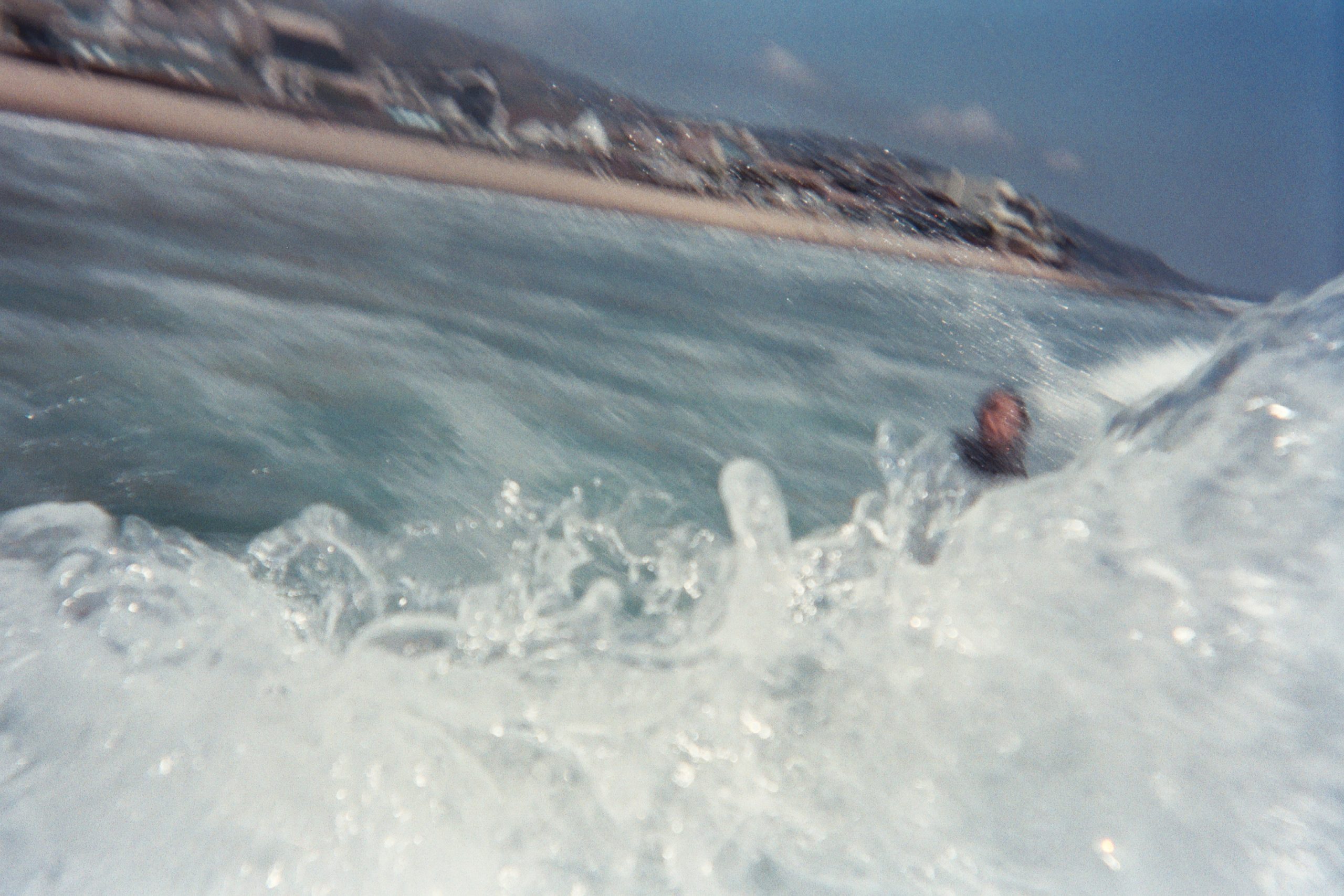
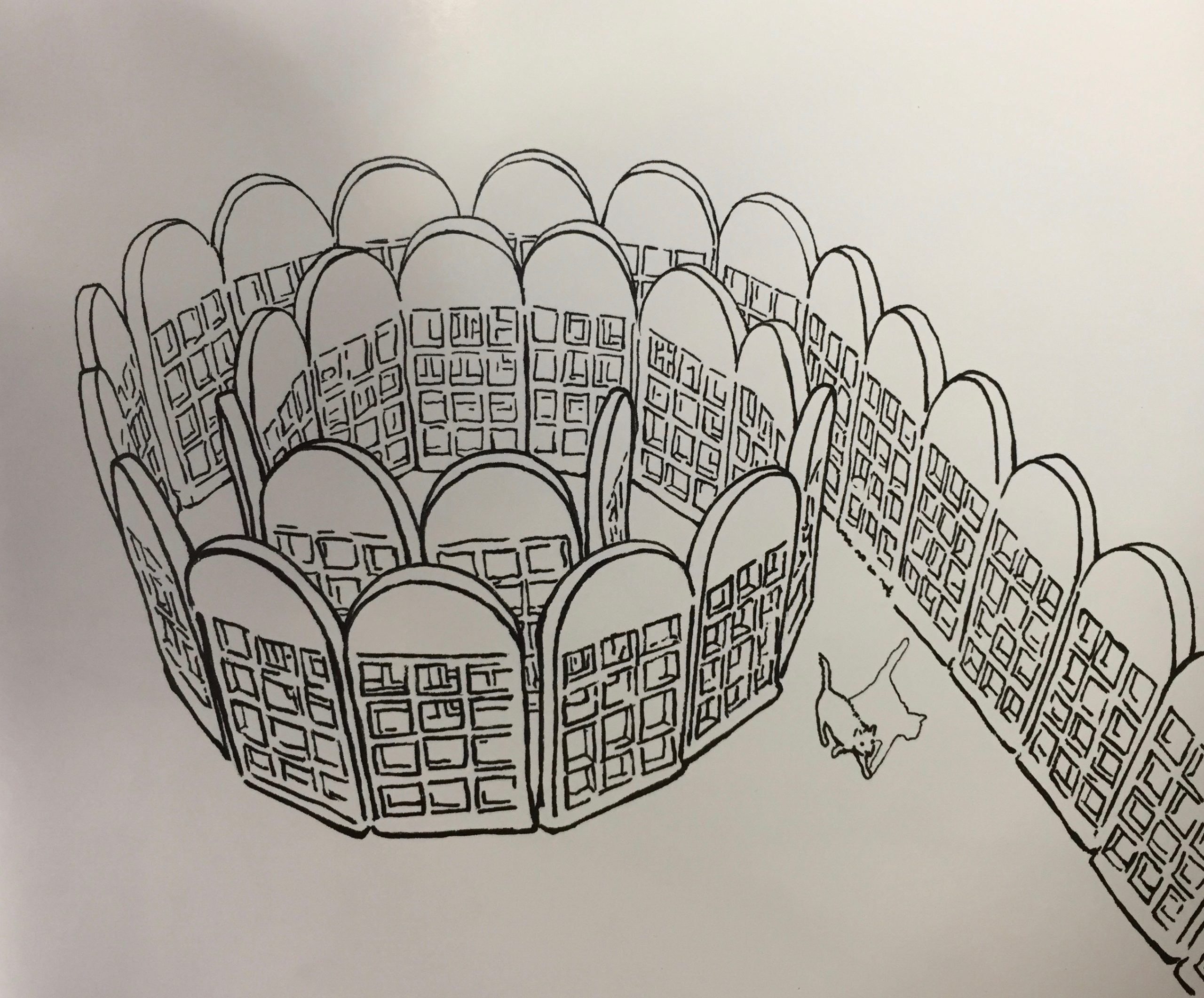
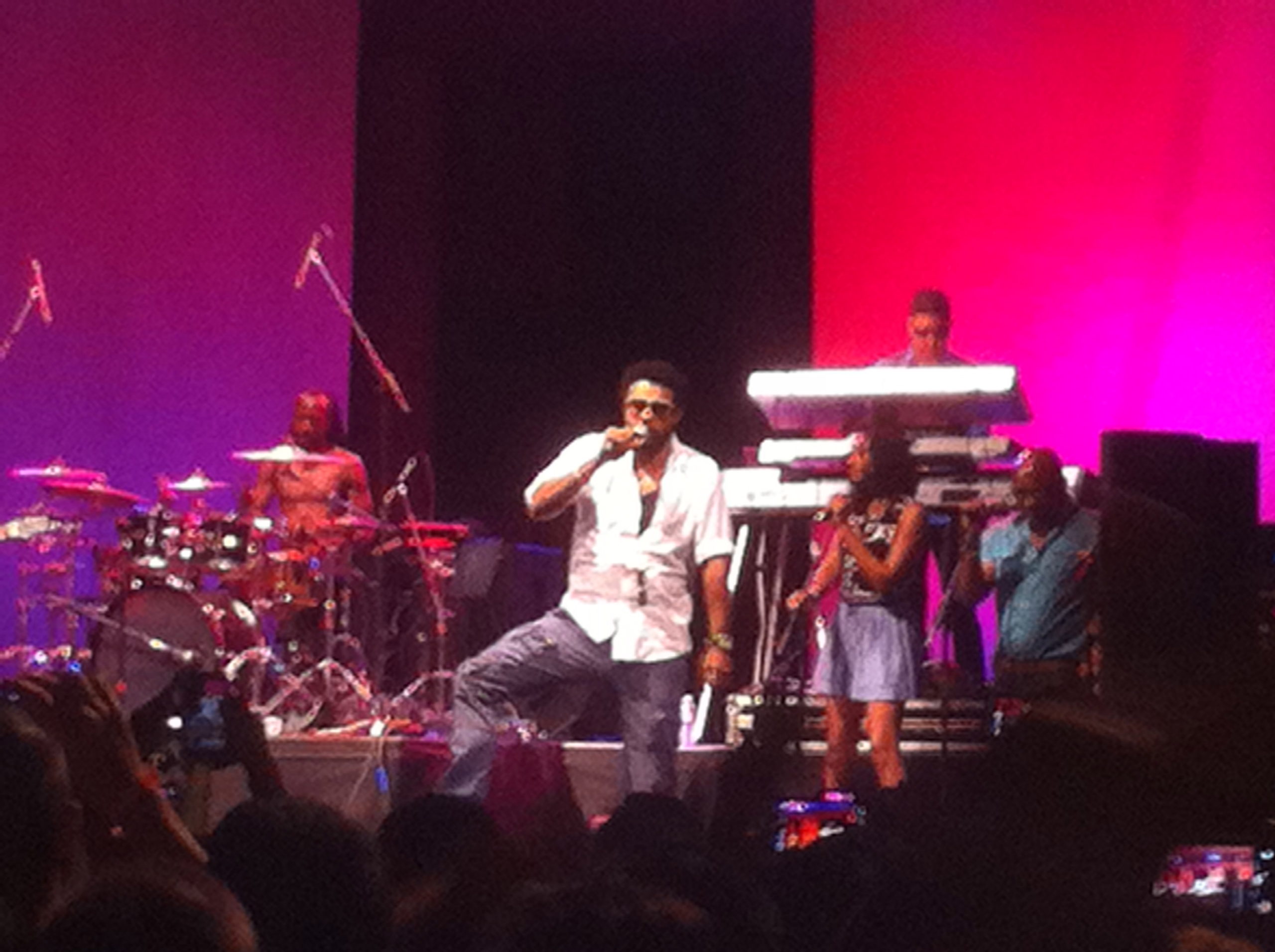
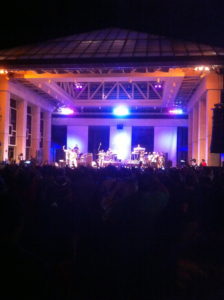

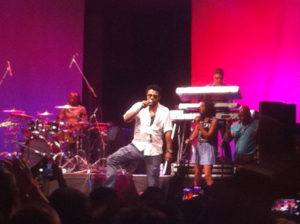
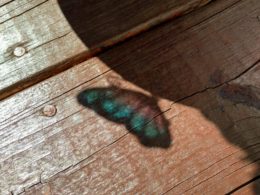

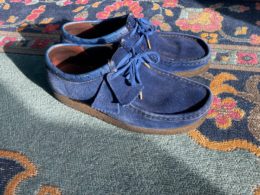
Nice one, brah.
Your story reminds me of the time we drank 40’s of Mickey’s Ice, local craft beer and Aussie Shiraz. Then a top feed from Momma D, some wholemeal bread and a local hip-hop show. Those stars man… They still come to me between 2 30 and 4 45 AM, deep in my REM sleep.
If you feel the need for a nom-de-plume, like Eric Arthur Blair did, I suggest Rekc-Arc. It fits in with your whole deal very snugly.
STOP! MAUI TIME! A yo, a a yo…